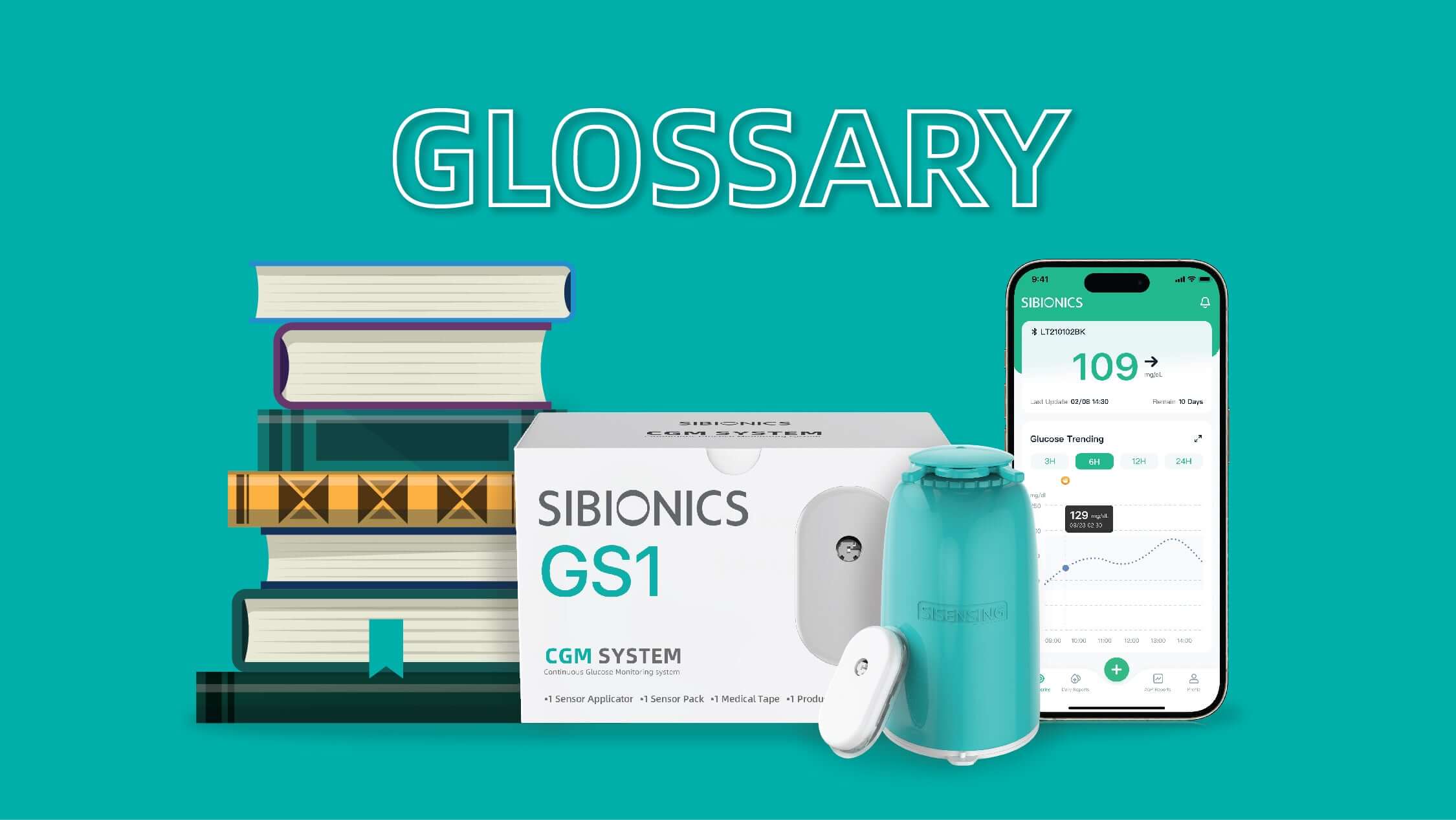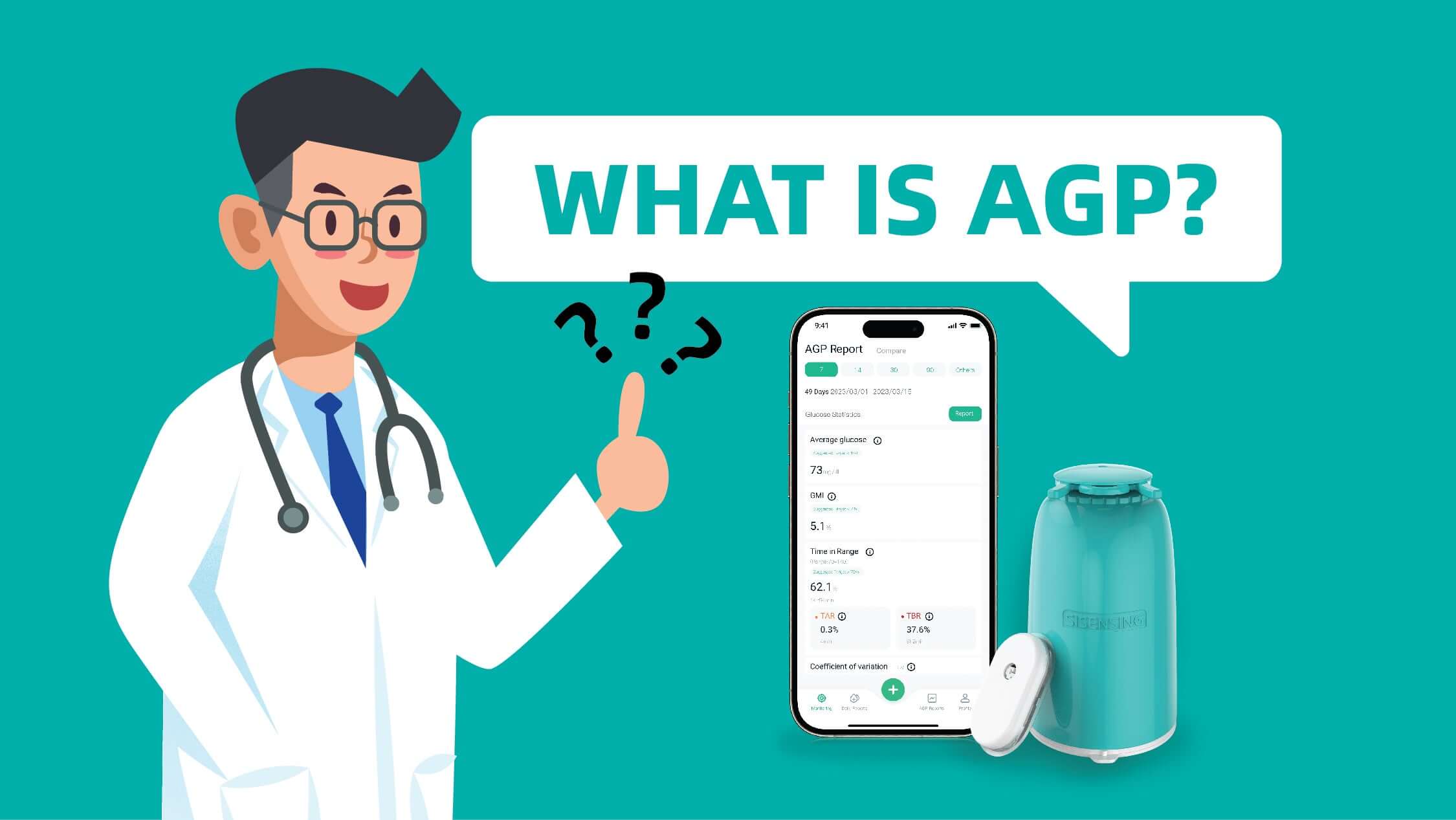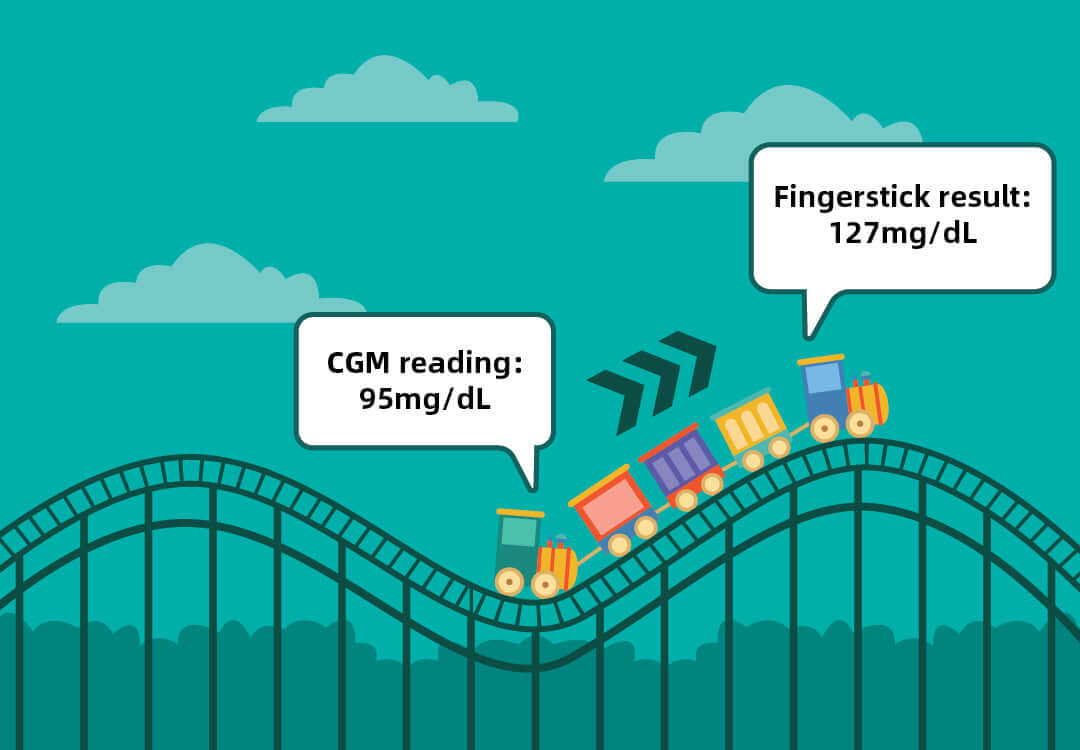Navigating the intricate world of Continuous Glucose Monitoring (CGM) can be a daunting task, especially for those new to the technology.
To unravel the intricacies of CGM terminology, we have prepared a comprehensive glossary list. Whether you're a healthcare professional, an individual managing diabetes, or someone simply curious about the advancements in glucose monitoring, this glossary will help you break down complex concepts into easily digestible explanations.
Ambulatory Glucose Profile(AGP) Report:
The AGP report summarizes your CGM data over multiple days of wear. The AGP report can be generated from 5 days to 90 days of CGM data.
Alerts and Alarms:
Refers to the notifications triggered by CGM systems when glucose levels reach preset thresholds.
Calibration:
Refers to a process to align CGM readings with a blood glucose meter by entering occasional fingerstick measurements. Certain CGM systems require fingerstick blood glucose (BG) meter readings to produce precise sensor interstitial glucose readings. The BG meter reading is entered into the device and used for scheduled calibrations.
Some CGMs come factory-calibrated, like the SIBIOINICS GS1, eliminating the need for fingerstick calibration.
Coefficient of Variation:
The Coefficient of Variation (%CV) is determined by dividing the glucose Standard Deviation by the mean glucose. %CV serves as a standardized metric to evaluate the extent of glucose variability. A higher %CV indicates greater variability in CGM readings.
Data Sharing:
The ability to share CGM data with healthcare providers, caregivers, or loved ones.
Estimated Average Glucose (eAG) :
Estimated Average Glucose (eAG) is an estimated average of your blood sugar (glucose) levels throughout 2 to 3 months.
Glucose Management Indicator (GMI):
Glucose management indicator (GMI) estimates the anticipated laboratory A1C level based on average glucose measured through continuous glucose monitoring (CGM) values. The average glucose is most accurate when derived from 14 days of CGM data. Discrepancies between GMI and laboratory A1C may stem from variations in an individual’s red blood cell lifespan, the binding of glucose to hemoglobin, or recent fluctuations in glucose control.
Hypoglycemia:
Abnormally low blood sugar levels.
Hyperglycemia:
Abnormally high blood sugar levels.
Interstitial Fluid:
Refers to the fluid that surrounds and bathes the cells of tissues in the body. It is found in the spaces between cells and is composed of water, electrolytes, nutrients, gases, and various other substances.
Interstitial Glucose Level:
Refers to the glucose present in the fluid surrounding the cells within the tissue.
Lag Time:
Refers to the delay in CGM glucose readings compared to fingerstick blood glucose readings. This occurs because the interstitial fluid glucose measured by the CGM sensor tends to lag behind the glucose levels measured by the blood glucose meter, particularly during rapid changes in glucose levels. While the lag time can extend up to 15 minutes, it is typically shorter.
Sensor:
Refers to the small device implanted under the skin to measure glucose levels continuously.
Time in Range (TIR)
Refers to the amount of time a person's blood glucose levels remain within a target or specified range. This range is typically defined by two thresholds: a lower limit(e.g., the minimum acceptable glucose level), and an upper limit(e.g., the maximum acceptable glucose level).
Time above Range (TAR)
Refers to the amount of time a person's blood glucose levels remain above the upper limit(e.g., the maximum acceptable glucose level).
Time below Range (TBR)
Refers to the amount of time a person's blood glucose levels remain below the lower limit(e.g., the minimum acceptable glucose level).
Trend Arrows:
Trend arrows indicate the direction your glucose is heading, which enables proactive adjustments to prevent hyperglycemia or hypoglycemia.
Warm-up Time:
The amount of time the CGM takes for the sensor to calibrate itself after being inserted under the skin before data transmission to the receiver. This warm-up time varies among different devices.
€62,99
Monitoramento Contínuo de Glicose por 14 Dias
Leituras de sensores altamente precisas
Relatórios AGP exportáveis
Dados compartilháveis de glicose em tempo real
Alarme de glicose personalizável
Aplicativo fácil de usar
Calibração Grátis
Sem digitalização
IP28 à prova d'água
… read moreSistema de monitoramento contínuo de glicose SIBIONICS GS1 CGM






